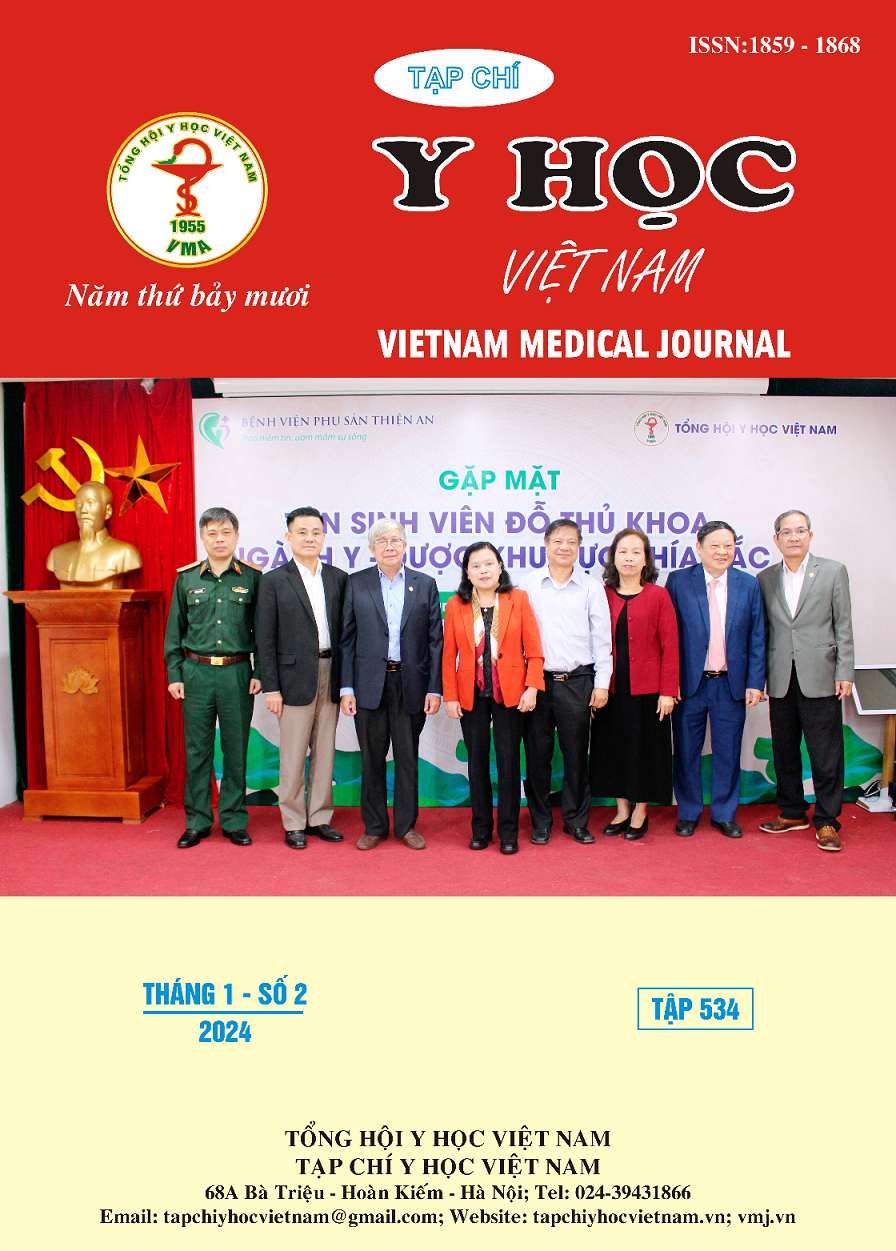RESULTS OF COAGRASPER HEMOSTATIC FORCEPS IN THE TREATMENT OF GASTROINTESTINAL BLEEDING DUE TO GASTRIC AND DUODENAL ULCERS AT THE DIGESTIVE CENTER OF BACH MAI HOSPITAL
Main Article Content
Abstract
Study evaluating the results of coagrasper hemostatic forceps in the treatment of GI bleeding due to gastric and duodenal ulcers at the Digestive Center of Bach Mai Hospital. Descriptive, retrospective study combined with a prospective study on 126 patients. The results showed that 112 patients (88.9%) had successful initial hemostasis and 14 patients (11.1%) had recurrent bleeding within 3 days, 11 patients had successful hemostasis in the second phase, and 3 patients had hemostasis. The third bleeding was successfully stopped, no patient required radiological intervention or surgery or died. 70.6% of patients needed blood transfusion during treatment. Subjects with Forrest Ib, IIa, IIb classification have a higher success rate than type Ia, subjects using COA alone have a higher success rate than those using TCM+COA and subjects with ulcer size small children have a higher success rate (p<0.05). Hemostasis using the coagrasper method is effective and safe in the treatment of bleeding caused by gastric and duodenal ulcers.
Article Details
References
2. Birda CL, Kumar A, Samanta J. Endotherapy for nonvariceal upper gastrointestinal hemorrhage. Journal of Digestive Endoscopy. 2021; 12(02):078-092.
3. Kamal F, Khan MA, Tariq R, Ismail MK, Tombazzi C, Howden CW. Systematic review and meta-analysis: monopolar hemostatic forceps with soft coagulation in the treatment of peptic ulcer bleeding. European journal of gastroenterology & hepatology. 2020;32(6):678-685.
4. Đào Văn Long. Nghiên cứu về xuất huyết tiêu hóa trên không do tăng áp lực tĩnh mạch cửa tại 17 Bệnh viện lớn ở Việt Nam. Tạp chí y học VIệt Nam. 2015;426:109-113.
5. Trần Duy Hưng, Trần Ngọc Ánh. Nghiên cứu ứng dụng thang điểm T-score trong đánh giá xuất huyết tiêu hóa do loét dạ dày – hành tá tràng: Luận văn bác sĩ chuyên khoa II, Trường Đại học Y Hà Nội; 2020.
6. Toka B, Eminler AT, Karacaer C, Uslan MI, Koksal AS, Parlak E. Comparison of monopolar hemostatic forceps with soft coagulation versus hemoclip for peptic ulcer bleeding: a randomized trial (with video). Gastrointestinal endoscopy. 2019;89(4):792-802.
7. Świdnicka-Siergiejko A, Rosołowski M, Wróblewski E, Baniukiewicz A, Dąbrowski A. Comparison of the efficacy of two combined therapies for peptic ulcer bleeding: adrenaline injection plus haemoclipping versus adrenaline injection followed by bipolar electrocoagulation. Przeglad gastroenterologiczny. 2014;9(6):354-360.
8. Wong SK, Yu LM, Lau JY, et al. Prediction of therapeutic failure after adrenaline injection plus heater probe treatment in patients with bleeding peptic ulcer. Gut. 2002;50(3):322-325.


